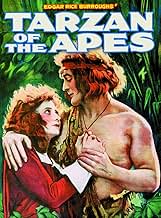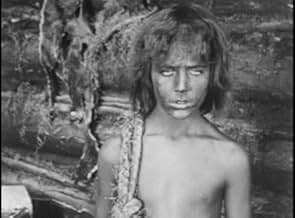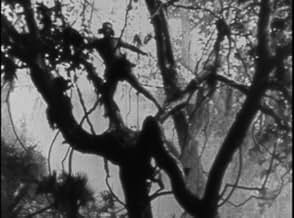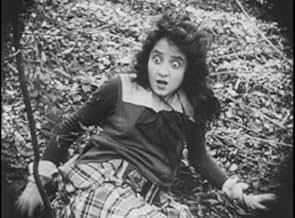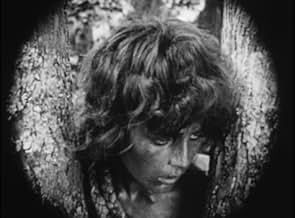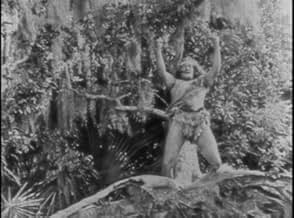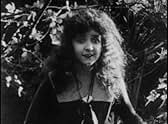IMDb RATING
5.7/10
983
YOUR RATING
Reared by a childless ape, the orphaned heir of the Greystokes becomes one of the apes. Then Dr Porter organises a rescue expedition, and his beautiful daughter Jane catches his attention. H... Read allReared by a childless ape, the orphaned heir of the Greystokes becomes one of the apes. Then Dr Porter organises a rescue expedition, and his beautiful daughter Jane catches his attention. Has Tarzan of the Apes found the perfect mate?Reared by a childless ape, the orphaned heir of the Greystokes becomes one of the apes. Then Dr Porter organises a rescue expedition, and his beautiful daughter Jane catches his attention. Has Tarzan of the Apes found the perfect mate?
- Director
- Writers
- Stars
Madame Sul-Te-Wan
- Esmeralda - Jane's Maid
- (uncredited)
Stellan Windrow
- Tree-Swinging Tarzan
- (uncredited)
- Director
- Writers
- All cast & crew
- Production, box office & more at IMDbPro
Featured reviews
This original silent version of the Lord of the Apes is perhaps the truest screen representation of the way Tarzan is envisioned in the books by Edgar Rice Burroughs. It is seems very crude but really isn't. It follows the first story (in as much as it can in the limited time of the feature) very closely. Elmo Lincoln, while no Adonis, is very adequate in the role. He's not Johnny Weissmuller...but then Johnny didn't really look all too much like Tarzan should have either.
Cinema's first adaptation of Edgar Rice Burrough's famous novel sees screen strongman Elmo Lincoln claiming a place in cinematic history in the title role. With his bulging eyes and crazed grin, he's a strangely unhinged version of the ape man, but Lincoln's eccentric portrayal somehow makes him all the more convincing. Although only a 60 minute version of the original 2-hour film survives, the plot remains both coherent and remarkably faithful to Burrough's famous novel, and the swamplands of Louisiana provide a convincing substitute for the African jungle.
...because of his already established reputation as a Hollywood strong man (e.g. his role as the Mighty Man of Valor in the 1916 DW Griffith classic "Intolerance").
Also, the image of Tarzan in 1918 was not that of a lithe gymnast like Christopher Lambert in "Greystoke", but of a man powerful enough to wrestle lions. Strength equalled bulk.
There's an interesting piece of trivia attached to that movie and Uganda (that's in East Africa) where I'm now based. There's a popular myth around here that the 1918 version of "Tarzan of the Apes" was filmed on the northern shores of Lake Victoria. In fact it was shot, I believe, in Louisiana.
Also, the image of Tarzan in 1918 was not that of a lithe gymnast like Christopher Lambert in "Greystoke", but of a man powerful enough to wrestle lions. Strength equalled bulk.
There's an interesting piece of trivia attached to that movie and Uganda (that's in East Africa) where I'm now based. There's a popular myth around here that the 1918 version of "Tarzan of the Apes" was filmed on the northern shores of Lake Victoria. In fact it was shot, I believe, in Louisiana.
Whenever I watch a silent film, I try to view it in the proper context (time it was made, technology, etc.). I got a kick out of this film. I imagined what wonder there was in viewing giraffes, rhinos, elephants, pythons, and a host of jungle life. I particularly enjoyed the young man who played Tarzan as a child. His face was continually full of wonder and life. For me, the movie took a downturn when Elmo Lincoln showed up. For a guy who obviously spent his time running through the jungle, climbing trees, wrestling critters ten times his size, he looked like one of the guys that used to sit next to my father at his favorite watering hole. He has that huge paunch and those fleshy white legs. I was very aware that this Tarzan was in continual danger of falling off a branch (possibly breaking it) and doing himself harm. Let's face it: he also wasn't exactly going to win any beauty contests. If Jane hadn't had a bad experience with he fiancé, would she have given him a second look. Jane, no great prize herself, gets together with him, but I couldn't help but wonder what they would be doing, other than the obvious. All that aside, it was fun seeing this. I had heard about the film for years and decided to purchase a copy for myself. It was worth it for the novelty.
If someone watches this film and starts looking for shortcomings, they'll probably find a reasonable amount. However, considering the film was made in 1918, it's an amazingly good film--even with its few mistakes and cheesy touches--which, relative to other films of the day, were few.
This original Tarzan film was made in Louisiana. I live in Florida and I could tell by looking at the plants that it was filmed in this part of the USA, but considering that many later Tarzan films were filmed with houseplants all over the set, the backwoods of Louisiana (with all its Spanish moss) was a good choice for a domestic production. As far as the wild animals go, it was a mixed bag. Unfortunately, the elephant was an Asian elephant but I can't blame the film makers too much--the African variety are a lot nastier and dangerous. What I can blame them for, a bit, are the apes that adopt Tarzan. They are clearly people in cheap ape costumes--that look neither like gorillas or chimps--just people in ape costumes! But once again, given the technology of the era, it isn't that bad--plus, Stanley Kubrick did the same thing in "2001" and it's considered a masterpiece!! As for the plot, aside from the addition of a character and a few other small changes, it is essentially Edgar Rice Burroughs' book come to life. It's actually much more accurate than many of the later versions and because it stays closer to the book, it is more interesting and watchable...and less silly. In fact, as far as the writing, direction and acting go, it was all very, very good for such an early full-length film--and a lot better than the gobs of Tarzan films from the 1950s and 60s.
Overall, very good and very interesting.
This original Tarzan film was made in Louisiana. I live in Florida and I could tell by looking at the plants that it was filmed in this part of the USA, but considering that many later Tarzan films were filmed with houseplants all over the set, the backwoods of Louisiana (with all its Spanish moss) was a good choice for a domestic production. As far as the wild animals go, it was a mixed bag. Unfortunately, the elephant was an Asian elephant but I can't blame the film makers too much--the African variety are a lot nastier and dangerous. What I can blame them for, a bit, are the apes that adopt Tarzan. They are clearly people in cheap ape costumes--that look neither like gorillas or chimps--just people in ape costumes! But once again, given the technology of the era, it isn't that bad--plus, Stanley Kubrick did the same thing in "2001" and it's considered a masterpiece!! As for the plot, aside from the addition of a character and a few other small changes, it is essentially Edgar Rice Burroughs' book come to life. It's actually much more accurate than many of the later versions and because it stays closer to the book, it is more interesting and watchable...and less silly. In fact, as far as the writing, direction and acting go, it was all very, very good for such an early full-length film--and a lot better than the gobs of Tarzan films from the 1950s and 60s.
Overall, very good and very interesting.
Did you know
- TriviaEdgar Rice Burroughs sold the film rights for "Tarzan of the Apes" to the National Film Corporation on June 6, 1916. He received a record $5,000 cash advance on royalties, $50,000 in company stock and 5% of gross receipts.
- Alternate versionsAbridged version released by Hollywood Film Enterprises in 1937 with the title, Tarzan the Boy.
- ConnectionsFeatured in Fractured Flickers: Rose Marie (1963)
- How long is Tarzan of the Apes?Powered by Alexa
Details
Box office
- Gross US & Canada
- $3,270,000
- Runtime1 hour 13 minutes
- Sound mix
- Aspect ratio
- 1.33 : 1
Contribute to this page
Suggest an edit or add missing content

Top Gap
By what name was Tarzan chez les singes (1918) officially released in India in English?
Answer
